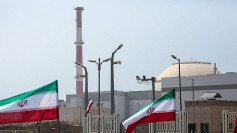A volcano in Japan erupted on Wednesday, sending a giant column of ash several miles into the sky. The eruption of Mount Aso, a volcano located on the main southern island of Kyushu, has prompted officials to increase alert levels and warned nearby residents of possible lava flowing and falling rocks.
The Japan Meteorological Agency said the eruption sent ash up to 3.5 kilometers (2.2 miles) into the sky. Mount Aso erupted at approximately 11:43 a.m. local time (02:43 GMT). Authorities said no casualties or major damage to infrastructures have been reported so far.
Authorities said there was reportedly a group of climbers on the mountain when the eruption occurred. Chief Cabinet Secretary Hirokazu Matsuno said they are now checking the status of the climbers to see if they had safely escaped.
Several hikers were reportedly also near the mountain when the volcano erupted. Fortunately, all of them were able to escape. Nearby CCTV cameras were able to capture footage of the eruption, which send giant rocks flying into the sky.
Following the eruption, authorities raised the alert level for the volcano to alert level 3. People have been warned not to approach the volcano, which is a popular tourist destination. Authorities said falling rocks and pyroclastic flows are expected to be possible hazards within a 1 kilometer (0.6 miles) radius of the volcano's crater.
Weather forecasters said the eruption will likely produce dark clouds of ash within the volcano's immediate vicinity. Ash is expected to blanket some parts of the Kumamoto prefecture and nearby town Wednesday until Thursday.
The last time Mount Aso erupted was in 2019. Compared to the latest eruption, the one in 2019 was relatively small. The volcano first rumbled to life in 2016 after having been dormant for the past 19 years.
In 2014, Mount Ontake in Japan's central Nagano prefecture suddenly erupted, killing an estimated 63 people. It was the worst volcanic eruption in Japan since the early 1900s.
Japan is one of the world's most volcanically active countries given its location within the so-called Pacific Ring of Fire. Countries that lie within the ring experience increased volcanic eruptions and earthquakes when compared to the other places.






